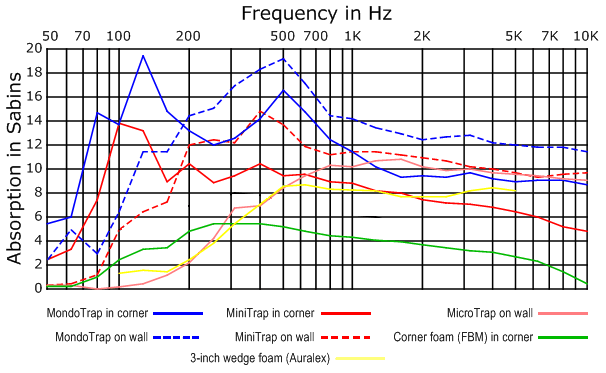@edechamps in terms of physical solutions, I would try bringing the absorber out from the wall as far as possible, so that there's as much air as possible between the wall and the absorber. This will increase its effectiveness, particularly at lower frequencies. Alternatively, add additional absorbers to effectively double/triple the depth of the absorber. And place some low-density acoustic foam over the panel to ensure no high frequencies are being reflected (I think you mentioned you'd already tried this).
It's unclear to me how much low frequencies (say, below 300 Hz) matters when it comes to this. Intuitively I'd think this part of the spectrum is not the main cue for localization, but maybe I'm wrong. I experimented with some low-pass/high-pass filters and it's much easier for me to pinpoint the issue on my test sample when it's high-passed with, say, a 250 Hz brickwall then when the opposite lowpass filter is applied.
(For those curious,
here is the sample I'm using. It's a conversation (male vocals) that happens around the 12th minute of
Devs S01E01 and makes the issue very apparent.)
Just to add to the previous post, and in case it's not already apparent, what is happening IMO is that your brain is interpreting that strong early reflection as a cue that the (phantom) source is close to the left wall. So to solve the problem, you'll really need to reduce that reflection's intensity to the point at which it stops giving your brain this incorrect cue.
Yes, this has been my main hypothesis thus far. That left wall reflection is so early and so loud that my brain is likely creating a phantom image between the right speaker and the left wall.
And place some low-density acoustic foam over the panel to ensure no high frequencies are being reflected (I think you mentioned you'd already tried this).
Indeed, and thus far that seems to have produced the best results, both in ETC measurements and in actual listening. It really looks like the flat, relatively smooth surface of the MondoTrap is ineffective at HF absorption, and the foam wedges perform significantly better (perhaps because the wedge shape provides some diffusion as well).
Now I'm wondering if I can improve even further on this solution and cover the 2 dB imbalance that still remains. The acoustic foam I used in that last experiment is pretty basic and cheap I believe -
Pro Acoustic AFW305. Maybe I can get even better results by using something fancier, such as thicker foam from Auralex or something.

